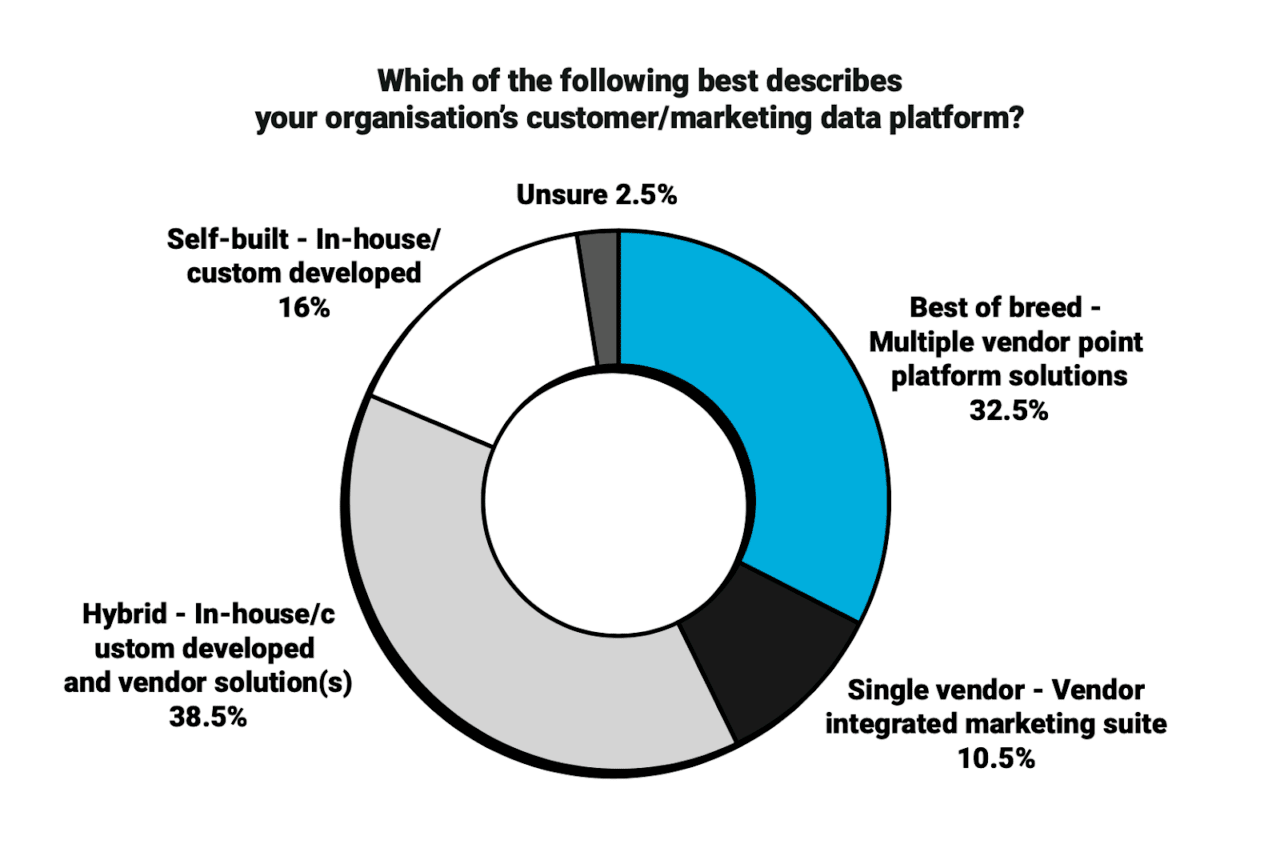Technology Vendors vs. In House Builds
3 Reasons publishers should choose tech vendors over in-house builds
With users demanding more personalization in their online experiences, digital publishers are under mounting pressure to collect visitor data and improve customer interactions through personalization.
As these standards become an inevitable component of any successful subscription business, having the necessary technology to match market needs becomes essential.
But with an urgent push for new technology, how can digital publishers decide whether to develop required tech in-house or work with an external provider?
With more than half of marketing professionals now believing that building tech in-house is a fleeting trend, it may be time to reconsider a more balanced approach to the build vs buy debate.
In this article, we’ll look at the top 3 reasons why it’s beneficial for publishers to work with technology providers as opposed to building in-house. We will also examine what you’ll need to consider if you choose to go down this route.
1. Tech vendors have the holistic view
Since new technology within the publishing value chain develops fast, it’s not unusual for market changes to develop ahead of your company’s implementation of a concept. As a result, you may start an in-house project for a specific piece of tech that rapidly becomes obsolete before the work is even complete!
This isn’t so much of an issue with external providers, in order to stay ahead of the curve and keep up with the competition, they have to stay close and understand what’s going on in the industry. That means not just keeping an eye on the competition, but also examining the different technologies that become available or favoured by digital publishing brands. Providers are then able to understand what is working, what isn’t, and identify the technologies they need to integrate with in order to better serve their customers.
This allows them to provide their clients with a best-in-breed solution that saves time and money in the long run. And since the digital publishing industry is an extremely competitive space, it benefits publishers to stay up to date with the latest tech in order to get a leading edge over competitors.
2. Internal costs add up
A popular argument for those who favour in-house builds is that external tech vendors are more expensive. However, in many situations, this is actually a fallacy. The misconception comes from skewed judgement around up-front costs.
While it’s true that hiring a third party may be more expensive initially, attempting to do everything internally frequently has hidden expenses that creep up, and can surpass those of external vendors.
It’s important to think about all the internal costs that are required to successfully build and maintain your own technology. This can include:
– The new hires and getting the right expertize
– The fire fighting and project management
– The day to day maintenance
– The additional tools and training
– General running costs
These hidden costs of building in-house are often overlooked. Many publishers would be surprised to learn that The New York Times spent $40 million to create their paywall technology in-house. Cash many digital publishers simply don’t have to spare.
Nowadays with the increase of the Martech ecosystem (from 300 companies in 2012 to around 8000 today), the price for external tech services is very competitive and can work out less than the total cost of doing something in-house.
3. You can only build what you know
Digital publishers might have an idea of what they want to achieve, but not know the best way to get there… or if it’s even possible!
“If you buy, you have to know what the system can do… but if you build, the system can only do what you know.” András Kárpáti, CTO, Telex
If your business wanted to build a paywall for example, you could develop an internal team and give them the paywall as a project. But ultimately, the delivery of that project is limited by the current team’s expertize.
If you decide to choose a tech provider instead, you get the benefits of a business specialising in the tech you hope to curate. These are businesses who are regularly assessing new integrations and innovations, and they’re keeping a pulse on industry standards.
“Nowadays there is no good reason to build software [specifically for paywalls] because there are so many good players in the market.” Marco Di Bernardo, CTO, 20Minuten
The shift in the industry
Ultimately, the case for choosing a tech vendor will still vary depending on the company and the project, but if you always choose in-house, there’s a chance you could limit your advancement in the future.
In the industry today, self-built tech is becoming less and less popular, with just 16% of marketers opting for a fully in-house approach, we’re seeing a far more common shift to multiple vendors and hybrid models:

Why best-in-breed?
Instead of depending on a restrictive set of tools that typically only work with one another, marketers may use best in breed technology stacks to ensure adaptability and flexibility.
Instead of depending on siloed set of tools that typically only work as a stand alone, marketers are leaning towards best-in-breed technologies to build their tech stack to ensure adaptability and flexibility.
Best-in-breed means being able to integrate with the best products of their type, thus future-proofing a business by allowing them to pivot should they need a different service or have a change in strategy.
If you decide to choose a tech provider instead, you get the benefits of a business specializing in the tech you hope to curate. These are businesses who are regularly assessing new integrations and innovations, and they’re keeping a pulse on industry standards.
“Nowadays there is no good reason to build software [specifically for paywalls] because there are so many good players in the market.” Marco Di Bernardo, CTO, 20Minuten